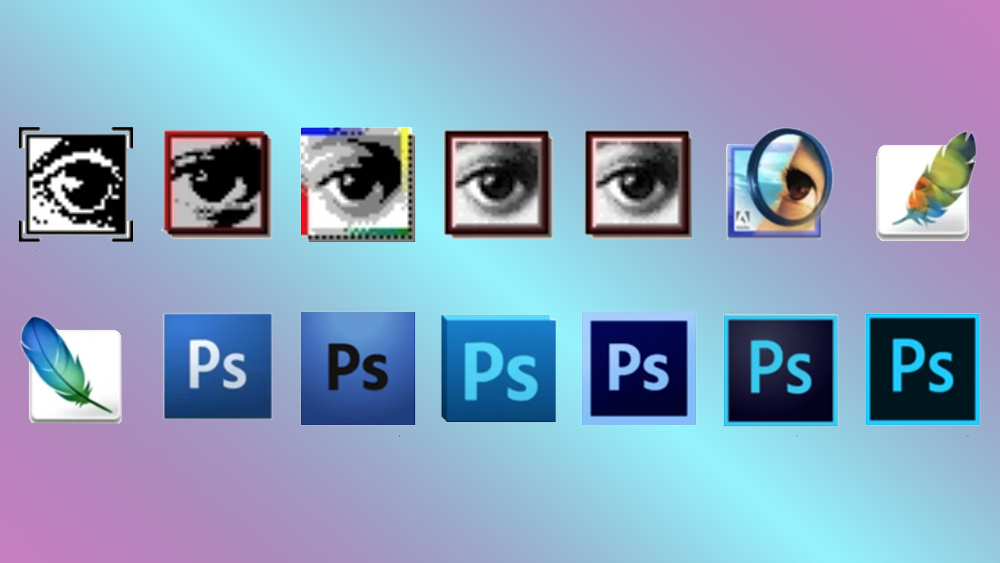venturebeat.com
Chinese game publisher NetEase raised fears with recent moves that it is unloading as much as all of its overseas holdings in U.S. game companies and elsewhere due to rising costs and other reasons.Such a move, which coincidentally is happening at the same time as Chinas retaliation to U.S. tariffs, could send earthquakes through the global gaming industry and hurt U.S. game companies in particular. However, once contacted by GamesBeat about these fears, NetEase denied it is dismantling its far-flung investments and overseas game studios.Based on our reporting, game industry insiders said that NetEase has been directed to divest its overseas holdings. Among NetEases big recent hits is Marvel Rivals, but yesterday members of the Seattle team that developed the game along with a team in China said they had been laid off. This was after the game brought in $136 million in its launch month of December.But sources we interviewed said that the Marvel Rivals team being fired by NetEase is just the start.Those sources said the company is losing its will to make games using overseas staff. Part of that reason is the high cost of U.S. developers in particular. Another reason is that Chinas game developers have also matured enough to make triple-A games, as seen by the success of China-based Game Sciences Black Myth: Wukong, which has sold tens of millions of copies.Its possible that NetEase plans to exit all international investments and holdings, including wholly-owned studios. Some of that will happen through layoffs, and some could happen through sales of studios. But its unlikely that NetEase will turn a profit on those investments if it plans to act quickly. Again, NetEase denied this and weve included their statements below.Based in Hangzhou, NetEase is the second largest game publisher in China, publicly traded on Hong Kong Stock Exchange and NASDAQ. David Kaye, founder of the venture capital firm F4 Fund, said in an interview with GamesBeat that talk of the retreat of Chinas game companies was all over the show at the Dice Summit, the event that drew gamings elite to Las Vegas last week.NetEase has made a strategic investment in Behaviour Interactive.In a post, Kaye said, China is in retreat: geopolitical tensions, some big bets not paying off and the whims of certain CEOs mean that a massive pullback has begun. One MAJOR strategic who has made dozens of investments in the past several years is reportedly pulling the plug and divesting ALL investments outside of China. Some will likely find buyers, others will not be so lucky.Other sources told us the firm in question is NetEase, and the size of its impact is very big. Newzoo ranks the company as the No. 5 game publisher by revenue. Traditionally, 90% of NetEases gaming income came from China and 10% from overseas. Just two years ago, William Ding, the company founder and current chief executive, spoke about plans to have international game revenue reach up to 50%. NetEase executive Simon Zhu became head of investments in 2016 and he increased the investments dramatically.While Dings goal could have effectively doubled the size of the company, those dreams may be on pause.The company has been investing steadily for years, putting money into start-ups, growth stage game companies, as limited partners into venture capital firms, doing acquisitions, and starting internal studios.This activity has buoyed the number of studios and people in the game industry today. NetEase put $100 million into Bungie, which later sold to Sony for $3.6 billion.NetEase backed Devolver Digital when it was started.And it anchored Makers Fund, which had $960 million in assets under management.NetEase bought Quantic Dram and Grasshopper Manufacture outright.These efforts were led by Simon Zhu, based in Seattle.But things have soured internally.Sources say Ding, NetEases CEO, has lost confidence in expensive overseas teams.Add to that the success of Black Myth: Wukong, which illustrates that making triple-A games in China can be less costly than those from Europe, the US, and Japan. In the case of Marvel Rivals, the team in China is expected to take over the live services for the game.Gaming M&A slowed after the pandemic and is slowly coming back, hampered in part because of interest rate policies. Many of the studios will not find buyers, and that will add to the already excruciating number of job losses in the industry. More than 34,000 people were laid off in the last 2.5 years, and more than 900 have been laid off in January. Those who were demoralized by these moves were hopeful that 2025 would bring better news for the game industry. Kaye noted that South Korean firms are filling the void by launching expansion plans and funding new studios. Saudi Arabias Savvy Games Group and its Scopely division are also looking for acquisitions. That could help soften the blow for those looking for jobs or companies looking to be funded or acquired. One source told us that everything that NetEases Zhu touched (all investments and holdings) were going to be unwound. NetEases trailing 12 months of gaming revenue is $11.7 billion. One question is whether the world conditions like the rise of Chinese triple-A game development could impact other firms in China and cause them to pull back as well. In a statement to GamesBeat, NetEase moved allay fears it is abandoning its non-Chinese game developers. The statement said, As far as overseas business efforts are concerned, NetEase has not wavered in its global expansion plans. Our two-pronged approach, proposed in 2022 (combining self-research and investments to explore overseas markets), is still actively progressing and yielding positive results. For titles developed by the self-owned studios, we successfully launched games likeOnce HumanandMarvel Rivalsin 2024. These projects demonstrate NetEases ability, along with our talented development teams, to produce high-quality games loved by players worldwide. For 2025, we have an extensive pipeline of titles in development, featuring a variety of genres, including FragPunk, Ananta and more.However, NetEase confirmed that it has conducted a retreat in some respects. The statement continued, As part of our investment strategy, we started scaling down two of our studios at the end of 2024. This decision was based purely on business evaluations and was not influenced by other factors. And this represents only a small portion of our overseas studio portfolio. Our studios in North America, UK, Spain, and Japan all continue to refine and develop their ongoing game projects. Some additional background information that has not yet been shared to clarify our approachNetEase said it is establishing unified goals across studios. Whether overseas first-party studio or domestic ones, the goals and vision remain consistent. The aim is to develop fun, high-quality games that players will enjoy; and focus on the long-term development and continuous operation of games, providing players with a sustained, quality gaming experience and service.We are very open and aim to leverage our companys strengths and accumulated expertise to support all developers. In order to achieve this vision, we have implemented an evaluation process, which applies equally to all NetEase studios globally both domestic and overseas, NetEase said.Meanwhile, the company said the trade war has not affected its strategy yet. The statement said, Regarding the tariff trade war, yes of course we are mindful of any developments in international trade. However, our decisions have been based solely on business evaluations and not influenced by other factors. We highly respect our gaming community in the US and their love and enthusiasm for our games is valued and appreciated.Will the rest of China follow suit?SAN FRANCISCO, CALIFORNIA NOVEMBER 05: A general view of atmosphere at the League of Legends World Championship Finals on November 5, 2022 in San Francisco, CA. (Photo by Colin Young-Wolff/Riot Games)Tencent, which is the worlds biggest game company has trailing 12 months of game revenue is $26.1 billion, including $7.7 billion international revenue and $18.4 billion of domestic Chinese revenue. Tencents market value is $599.7 billion. Based on what we know, Tencent is not pulling back. But the environment in the market with Donald Trump imposing tariffs on Chinese goods possibly including games and Chinese-made game consoles isnt helping with the overall environment. It also may not help that the Biden administration in its final days classified Tencent as a Chinese military organization. Tencent denied it was a military company.Tencent is highly invested in the United States, with 40% ownership of Epic Games and 100% ownership of Riot Games. Tencent has hundreds of game companies in its portfolio worldwide, including the United States. NetEase is far less dependent on the US companies and user base than Tencent. There have been other Chinese companies with US gamer customers and some that have invested in US-based studios, said Lisa Cosmas Hanson, president of market analyst firm Niko Partners, in a message to GamesBeat.She noted that in 2020 there was a CFIUS inquiry about Tencents ownership of Riot and Epic, during the Biden Administration. There was concern about the privacy or security of U.S. gamer data, but the concerns were put to rest for the most part, Cosmas Hanson said. The investments differ greatly from ByteDances ownership of TikTok and the TikTok US matter that is currently in discussion between US and China. The difference is primarily that Riot and Epic are U.S. companies themselves.NetEase Games acquired Quantic Dream.I do not see how a divestiture, if proposed or enforced, would be related to tariffs directly. I just dont see it that way, Cosmas Hanson said. Regarding tariffs, I have publicly responded to some industry observers who have posted on LinkedIn about their suspicions that the U.S. games industry will suffer because the Trump Administration will set tariffs on products from China, including consoles. My feeling is that even if it were a blanked tariff on all products manufactured in China, there would be a carve out for many items, including consoles. This happened in the past.But she noted that the tariffs, if implemented without a carve out, would be a detrimental impact to the US and Japanese companies (Microsoft, Sony, Nintendo) for tariffs on their consoles sold in the U.S. but manufactured in China, but have no impact on China.So what is the point. These are not Chinese consoles or companies, just manufacturing in China, she said. Tencent recently canceled a Splash Damage game and it also restructured Sumo Digital. But it has expanded as well in the West. For instance, in November 2024, Tencent acquired EasyBrain from Embracer and also acquired the UK studio Space Ape in the same month, said Charles Yu, a partner at game-focused Pillar Legal in Shanghai, in a message to GamesBeat. And Tencent sources said the firm may become more active, so long as it does not attract unwanted attention.Yu said that he doesnt think its accurate that all Chinese game companies will divest their U.S. or overseas game properties. Some of the firms clients are interested in U.S.However, it appears that Chinese game companies are less inclined to set up development teams in the U.S. or other Western countries due to concerns about high costs and management inefficiencies, Yu said. I think it is probably true that NetEase is scaling back its overseas investments. A recent news indicated that NetEase laid off the entire overseas strategy investment team and shut down several studios in 2024. However, NetEase never officially announced this news.By market capitalization, NetEase is worth $68.4 billion. It is among the worlds top ten game companies (alongside Apple, Tencent, Google, Xbox, and Nintendo). NewZoo lists NetEase as No. 5 by annual publisher revenue. NetEase acts as local publisher for Chinese World of Warcraft (recently renewing that deal last year with Microsoft) and Chinese Minecraft. The change in strategy is a big reversal of expansion plans in the past.In 2021, the China Audiovisual and Digital Publishing Association encouraged the local industry to makeoverseas efforts. This was thematically in keeping the Belt and Road Initiative of the Chinese government. The countrys strategy is similar to that of Saudi Arabia, which has authorized $37 billion in investments into gaming through its Public Investment Fund.A public company like indie publisher Devolver Digital might have effects if NetEase has to liquidate its 8% of Devolvers stock onto the market. NetEase also has a stake in privately held developer Behaviour Interactive.Over the years, NetEase invested in companies including Bungie, Nagoshi Studio, Ouka Studios, Satelight, Grasshopper Manufacture, Humanoid Origin, Quantic Dream, Something Wicked Games, Reel Wolves, PlayPulse, Liquid Swords, Skybox Labs, Studio Flare, Anchor Point Studios, Bad Brain Game Studios, PinCool, Youdao, Maestro, Xiaoice, Jobtong, Build A Rocket Boy, MyDearest, Fantastic Pixel Castle, Worlds Untold, Jumpship, Second Dinner, Astrid Entertainment, Kepler Interactive, BulletFarm, Sandsoft and T-Minus Zero Entertainment.It going to be complex for NetEase if it does choose to unwind.As one executive said, There is no buyer for these shares.As for the U.S. games industry, Kaye said theres new dry powder for VCs.While not on the scale of the go go years, LPs are continuing to deploy. A well known Series A-focused gaming fund has just raised over $100 million in their first close, and there are reports of a large new media and entertainment focused fund backed by a major Korean company with a gaming focused partner who will be based in LA. They will focus mainly on Series B and later, filling an underserved spot in the capital stack, Kaye said.In general, I think the entire game industry is still feeling the impact of over-expansion during the Covid, Yu said. Many studios may face challenges or be at risk if their next flagship game underperforms. For NetEase, I anticipate a significant improvement in their financial performance in Q4 2024 and Q1 2025, driven by the successful launch of Marvel Rivals and Yan Yun Shi Liu Sheng in December 2024.Yu added, Chinese game companies remain highly motivated to explore overseas markets, and we may see more overseas headquarters established by these companies for game publishing. However, it is likely that Chinese game companies will slow down their investments in overseas studios. The global success of games developed by Chinese studios, such as Black Myth: Wukong, Marvel Rivals, and Delta Force, has boosted confidence in their domestic capabilities. As a result, I expect Tencent, NetEase, and other companies to allocate more resources to their China-based teams or local studios.Daily insights on business use cases with VB DailyIf you want to impress your boss, VB Daily has you covered. We give you the inside scoop on what companies are doing with generative AI, from regulatory shifts to practical deployments, so you can share insights for maximum ROI.Read our Privacy PolicyThanks for subscribing. Check out more VB newsletters here.An error occured.












